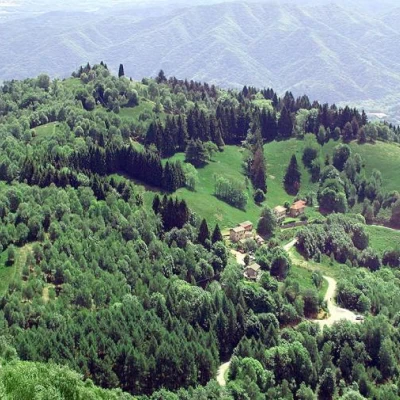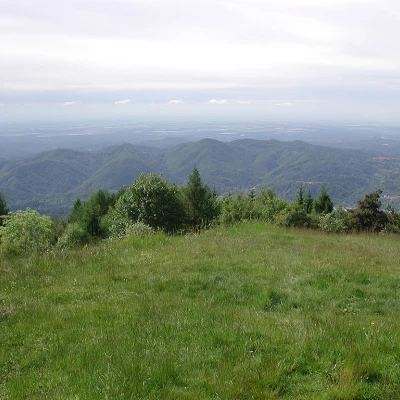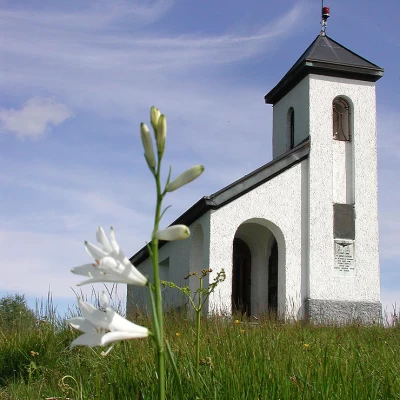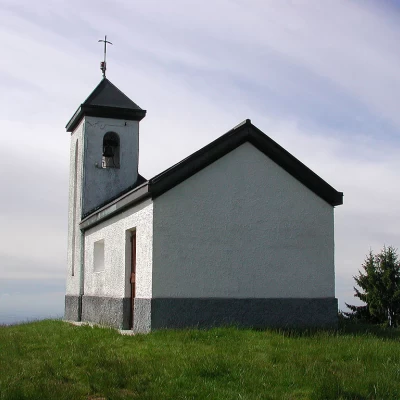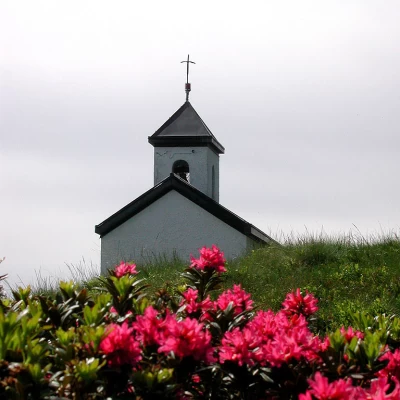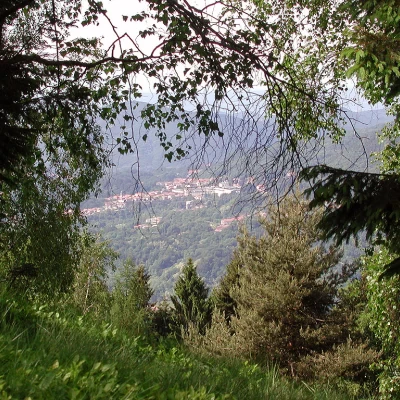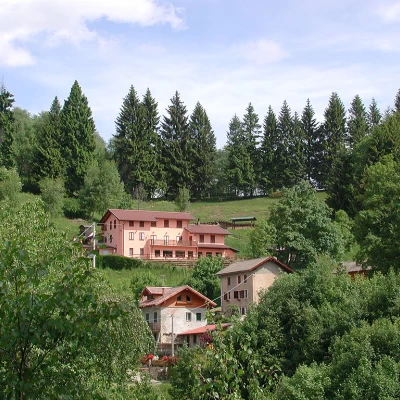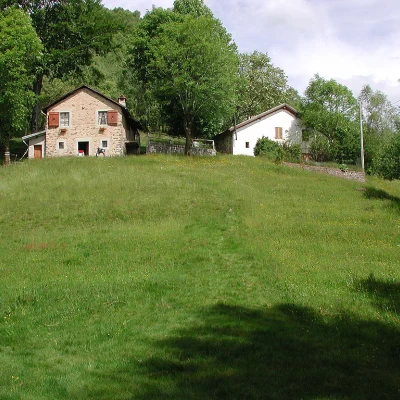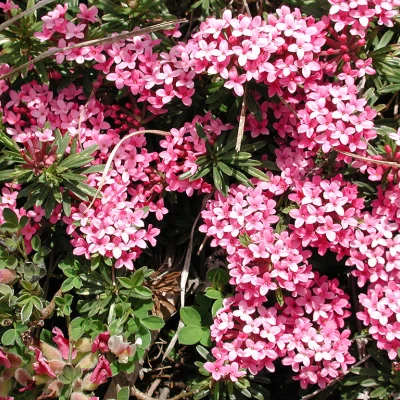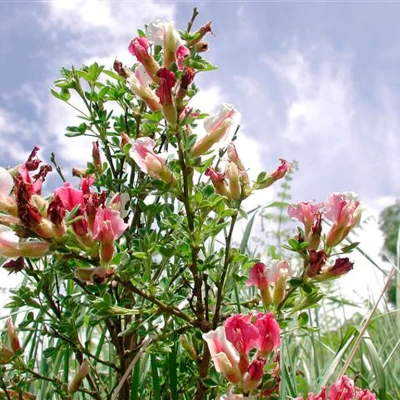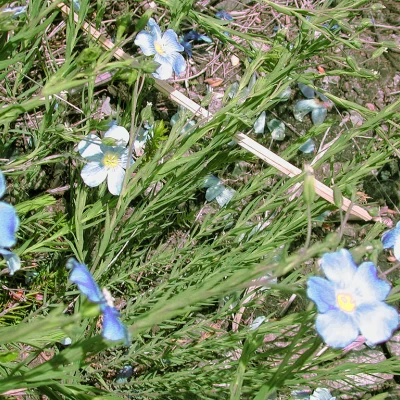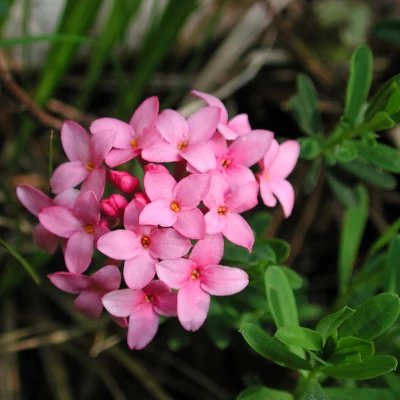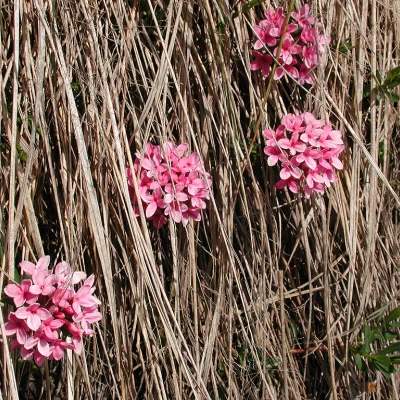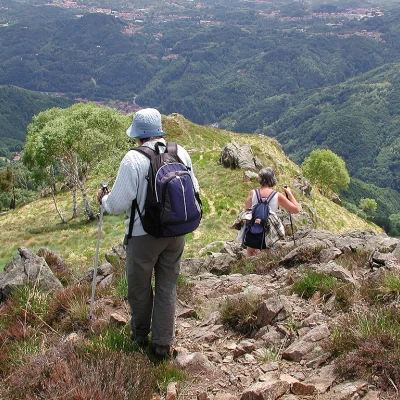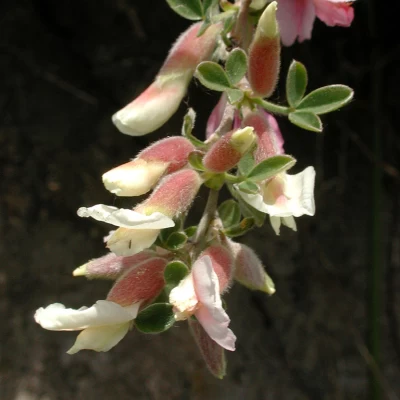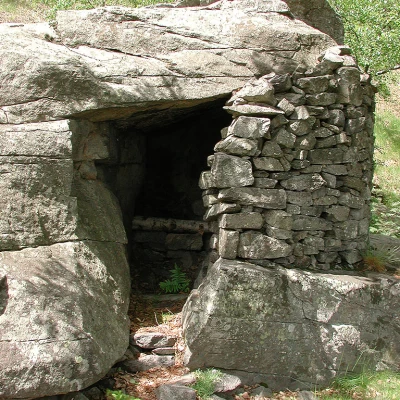Bocchetta Gemevola, from Alpe Noveis
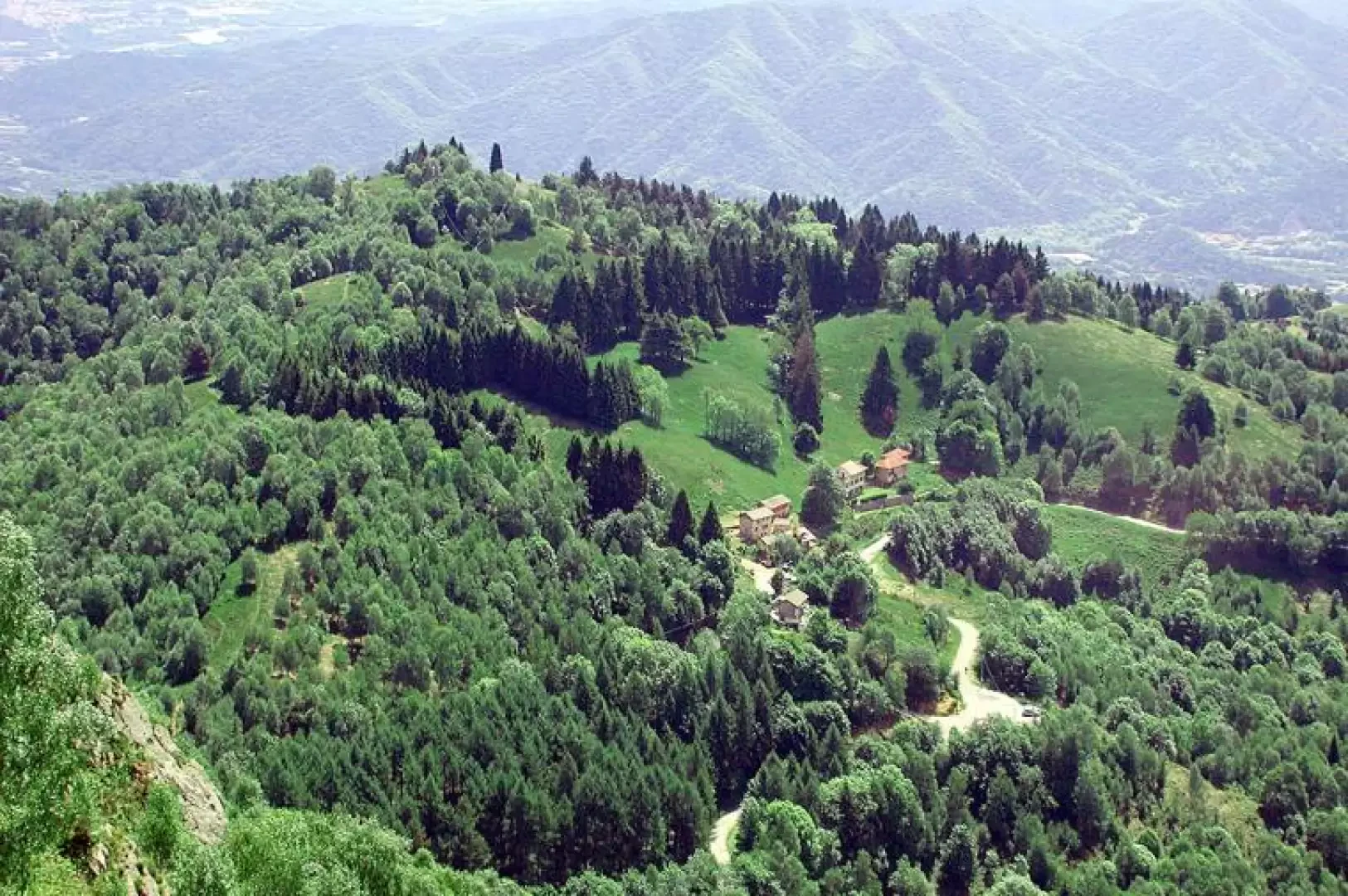
Access
If you arrive in the Biellese area on the Turin-Milan motorway, exit at Carisio, continue towards Biella, and after a few kilometres, at the next roundabout, turn right for Cossato, then follow the Vallemosso sign, then the Coggiola sign, and from Coggiola take the little road that leads to Noveis pastureland via Alpe le Piane (about 8 km). Those arriving from Valsesia, at Bornate (before Borgosesia, coming from the south), turn right for Pray - Coggiola, continue to Coggiola and from there climb up to Noveis. Alpe Noveis can now also be reached by a tarmac road from Ailoche.
Introduction
Alpe Noveis is located between Valsessera and the Postua valley, and was called the Switzerland of Biella between the two wars, verdant with pastures and rich in fir trees. There were several hotels at Biocchetta, which are still recognisable today; they opened in summer and were frequented until the Second World War; at that time, people also skied on the alp in winter. Those were other times, times when a holiday in Noveis had a certain charm. With the outbreak of the war, the holidaymakers were called to arms, and the golden age of the alp ended. During the war, the area was the scene of fighting between fascists and partisans, culminating in the shooting of seven partisans (four of them unknown), to whom a monument has been dedicated. In one of the hotels, several allied prisoners were housed for a time, who, instead of taking refuge in Switzerland, preferred to join the partisan formations. After the war, nobody thought of going up to Noveis for their holidays any more, and the charm of this alp remained the preserve of hikers. The GtB, the great Biellese traverse, passes through here; one of the paths leading to the Monte Barone di Coggiola refuge and the peak of the same name starts here, and in spring you can walk a beautiful loop along which many species, some of them very rare, flourish.
.Description
Leave the car in the car park (1099m), continue along the road in the direction of Ailoche and climb up the wide path marked [G2] that goes round a hump among the birch trees, passes near the monument to the partisans, and arrives in about twenty minutes at the top, at the chapel of the Alpini (1171m), a delightful little church that in spring is surrounded by bushes of flowering rhododendrons and white mountain lilies. If the day is clear, the panorama is vast, the villages of Valsessera, Borgosesia, further away the mountains of Canton Ticino, Campo dei Fiori above Varese, the Grigne, Resegone, Ticino, Novara, Vercelli, Superga, Monviso, in spring, the flooded rice fields of the Vercelli area. Admiring the view, take the path again, which from behind the church leads more or less over the hump to the Bocchetta della Volpe, so called because between the two wars, silver foxes were bred here in cages on the still existing terraces. From the Bocchetta (1144m), take the path to the left, which climbs under the slopes of Monte Gemevola, first into the woods, and then onto the meadows. Along the way, the Daphne Odorosa (Daphne Cneorum) blooms from the beginning to the end of May, depending on the weather, with its highly perfumed flowers in bright pink bunches. It is a very poisonous plant, which thrives here due to the low silica soil. In addition to daphne, daffodils, gentians, and the blue flowers of the flax. A little higher up, still along the path, we find beautiful bushes of Zumaglini's cytisus (Cytisus proteus), about which a long controversy arose, culminating in the recognition of the name in the 19th century by the naturalist Antonio Zumaglini. This small shrub is common here and in a few other areas; it is similar to a broom and has iridescent flowers, depending on the season, white with a little yellow, pink purple. Here and there, small blue flax flowers, a strange combination of flowering heather and heather, purple lilac primroses irsule. Later, in June, the centaurea or Biellese cornflower blooms, and the allium narcissiflorum, Piedmontese garlic, which grows only here (the only station in the Pennine Alps) and covers entire fragrant slopes. We continue along our route until we reach a saddle to the right of a small ridge (1426m, one hour from Bocchetta). Here, the path continues along the walls of the Gemevola to lead us to the Monte Barone refuge, but requires some caution, as it is for experienced hikers to climb up the trail to the summit of Monte Gemevola or Cornabecco (1576m), to the right of the col (half an hour along the rocky ridge), from where there is a beautiful view of the surrounding mountains and Monte Rosa. We instead descend to the left on path , along the east ridge of the Cornabecco. The path is very easy and very scenic, winding its way through cypress bushes and overlooking the Alpe di Noveis on the left. After a while it enters a birch forest, interspersed with clearings; At the next fork, take path on the left, which is also the route of the Grande Traversata Biellese, reach a huge boulder used by shepherds as a shelter and called the Balma, descend for a short distance, cross a small stream, climb up to a clearing among the fir trees (in this area we saw two roe deer), descend again to a gully among daphne bushes, and from here to the Bocchetta della Volpe and from here to the car (35 minutes).
(flowering period peonies June 10-20 depending on the weather of the year)
General information
Tour:from Alpe Noveis
Trail signposts: G2, G7, G4A and G4
Type of route:circular
Recommended period:May, June, July, August, September, October (peony flowering period June 10-20 depending on the weather of the year)
Sun exposure:southwest
